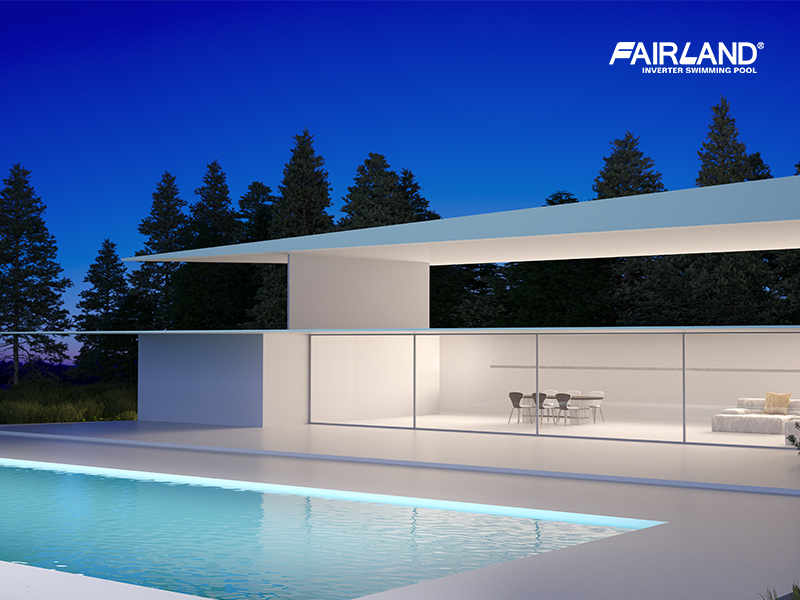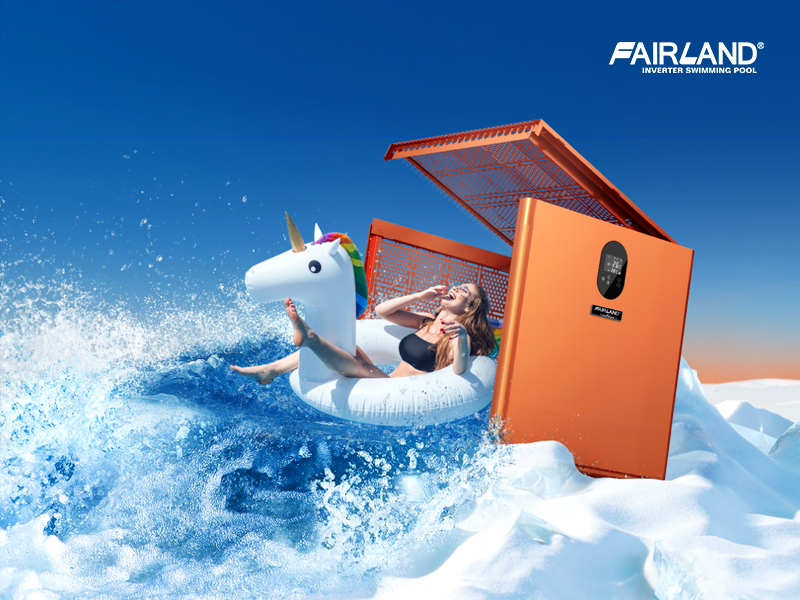
With pool season just around the corner, many pool owners are already planning to reopen their pools for the maximum joy of swimming. But sunny weather is not good enough to get you ready to open the pool. We must follow some basic guidelines and steps to ensure a clean swimming pool where families can swim healthily and safely.
Part 1: The Best Time to Open the Pool
1. Which month is the best to open the pool?
Mid-spring is the most popular time of year to open swimming pools. In Milwaukee, Wisconsin of the U.S., early April is a good time for locals to start thinking about opening their swimming pools. But people in North Carolina's Lake Norman and Charlotte regions have been monitoring the weather since early March, where winters are milder, and spring comes earlier than in many other parts of the United States. However, when it comes to Europe, it is still a little early to open the pool in March and April, as the weather doesn't get warm until May. Thus, when to open above ground pool or in-ground pool varies from region to region, it's all about the historical weather averages in your area.
2. What is the appropriate temperature to open a pool?
Regardless of the type of swimming pool you have, the proper time to open it depends on the weather. When you have observed that the open-air temperature exceeds 21 degrees Celsius all along for a week, then it is time to open your pool. It applies to above-ground pools, in-ground pools, and even heated pools.
3. What if the temperature in your area suddenly drops after opening the pool?
No worries. Before the weather gets warm, simply keep the pump running and install the pool cover again. As long as your swimming pool uses suitable energy-efficient inverter heat pump products, the sudden drop in air temperature will not prevent you from continuing to use the pool. When your swimming pool becomes a warm place to swim all seasons, you never have to worry about when to open it again.
Part 2: Preparations before Opening the Pool
Be prepared to open the pool two to three weeks in advance. Then you will have plenty of time to troubleshoot the equipment and resolve any water chemistry issues. Here is the checklist of the prep work you need to do.
The Checklist of the Prep Work in Pool Opening
1. In some regions with long, cold winters, the frigid low temperatures can easily damage equipment. Therefore, it is critical and imperative to check that existing equipment and preventive safety measures are in good condition.
2. Check the list of equipment used for pool opening in summer, especially the pool cover pump, water balance chemicals, etc., and accessories like skimmers.
3. Check the water level to ensure there are no leaks in the pool, especially for an above-ground pool, which can troubleshoot whether the swimming pool has suffered winter damage or not.
4. Check the system equipment, focusing on components and pressure leaks. See if any parts need replacing, clean and oil them in time to make sure they're running properly. Also, carefully check the pressure of pipes or equipment to avoid the risk of bursting.
5. Check electrical equipment and sort out safety hazards such as damaged conduits and exposed wires early. Especially around the pool area, there is a high risk of tripping or slipping, so basic safety measures should be in place. Make sure the pool alarms are functioning properly.
6. Spend some time pruning shrubs or branches in the backyard, ensuring the swimming pool is visible from the house or other main sitting area of the backyard.
7. Check the current inventory of pool supplies. If you find any outmoded, past-due, or damaged items, replace them in time.

Part 3: 6 Easy Steps to Open the Pool
When the above preparations are completed, how to open an in ground swimming pool correctly? The specific steps are divided into six parts, applicable to above-ground and in-ground pools.
1. Properly handle the pool cover.
We suggest first removing the water accumulation from the pool cover with a pool cover pump. When the pool cover is dry enough, sweep away the debris such as leaves and dirt. Then you can move the pool cover away. Be sure to clean the pool cover for the next use.
2. Remove and re-connect pool equipment.
With the pool cover tucked away, it is time to remove some of the plugs and accessories used to maintain the pool during the winter and properly connect the pool equipment needed for the summer. In addition to the essential equipment such as pumps and filters, install basic equipment that the family will use throughout the summer as pool steps, ladders, and railings. In the case of an above-ground pool, be sure to double-check your deck equipment.
3. Top up water.
You can fill up the pool to the appropriate water level when you have removed all pool debris and properly connected pumps, filters, and hoses. Check that all wires are joined up correctly and that the pump is functioning well.
4. Check the water balance and shock the pool.
Testing and balancing pool water is vital for healthy and safe swimming. Regular maintenance is required, ensuring chlorine levels are within acceptable limits. Shock the pool with chlorine shock products. The chlorine level is better to be higher than 3.0 ppm. For a healthy pool condition, keep in mind the following ranges of each chemical:
l Total Alkalinity: 80-140 ppm
l pH: 7.2 - 7.6
l Water Hardness: 150-300 ppm
l Conditioner: 50-70 ppm
5. Retest before swimming.
Get out of the pool for a day and check if leave out any problems. You can let your pool pump run for 24 hours or test your pool chemicals again to see if adjustments are needed. If the pool is clear to the bottom, then you are safe to enjoy the swimming season ahead.
6. Get your pool heating system ready.
When everything gets ready, it is time to start your pool heating system. The outside temperature of 21 degrees Celsius is still a little chilly for swimming. At this point, it becomes necessary to heat the pool water to the right temperature. Considering the heating costs and noise level, we recommend using smart inverter pool heat pumps. The Fairland
INVERX series inverter swimming pool heat pumps just shot right up to meet such demand. Supported by TurboSilence® inverter technology, the INVERX perfectly solves the problems of high energy consumption and loud noise when heating the swimming pool heat pump. The superior performance of 15 times quieter and 3 times energy saving makes the INVERX series extremely popular with end-users in the market. It is suitable for indoor and outdoor swimming pools of 20m³ to 160m³ and can meet the heating demand of above-ground pools and in-ground pools. With the broad range of operating air temperatures from minus 15 degrees Celsius to 43 degrees Celsius, the INVERX allows you and your family to enjoy not only one warm swim season but 4-season all year-round.
Final Words
Today's pool equipment, including pool heaters, pumps, and filters, is more energy-efficient than ever. Along with that, the cost we spend on operating the pool is much lower. Therefore,
we recommend that pool owners plan to open the pool earlier rather than later. When the daytime temperatures hit 16 degrees Celsius, it is time to make plans for opening the pool. Then when the temperature reaches 21 degrees Celsius, the swimming pool is ready to be used. Wouldn't it be nice to start the warm and relaxing swimming season early? Fairland is willing to provide an intelligent guarantee for your four-season swimming. Contact us today for more details via email at
sales@fairland.com.cn.
If you have any questions about pool heat pumps, here are the recommended guides for you:
l What is the difference between a heat pump and an inverter?
l How to choose the best swimming pool heat pump?
l How do you defrost a heat pump?


